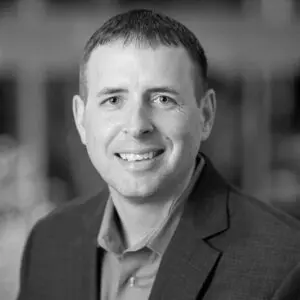News & Insights
News & Insights
By Stephanie Wierwille
The world is on the precipice of a big change. And not just changes from the pandemic. In the next decade, the power of data will completely upend our daily lives, culture, jobs, and of course, healthcare and marketing.
For consumers and organizations alike, a hyper-personalized future is on the horizon. From Alexa ordering our favorite products before we even know we want them; to chatbots that predict our healthcare needs; to wellness recommendations personalized to our genome — the massive amounts of data being generated today will be used for a very personalized tomorrow.
Today, consumers already expect tailored products and content. Google, Netflix, Amazon, Facebook and Instagram constantly tweak algorithms to predict what you’ll want next based on your preferences and people like you. Raise your hand if you’ve ever wondered, “can Facebook read my mind?”
Cut to healthcare marketing. Many health brands want to reach people at the right time with exactly the information they need. But because of complex consumer journeys, regulations, and competing business needs, healthcare brands are still largely focusing on mass messaging — both at the brand and service line level. Yet, inroads have been made in digital, programmatic, and social media advertising. Some healthcare marketers identify audience segments and target content based on demographics, psychographics, and interests with performance-based optimization, which is a big step forward. If this describes you, congratulations — you’re ahead of average healthcare bear! But it’s still not enough.
The way toward a more connected world
Last week, we shared 5 principles for building relationships through content. Let’s put these principles into practice, focusing on an increasingly personalized space where Americans spend the bulk of their free time: digital and social media.
Use social data to really know your audience
At BPD, we use a combination of tools to stand in our audiences’ shoes. Social listening lets us hear what people are saying about our clients, but also listen in on day-to-day lives, healthcare journeys, and beliefs. Audience tools let us see who’s following brands online, what their interests are, what their newsfeed looks like, who influences them, and what content makes them lean in.
Social isn’t just a way to reach people; it’s one of most useful tools for understanding what your audience is thinking, doing, listening to, reading, and watching.
More importantly, it’s prime testing ground. Social presents real-time performance data to test-and-learn what works and use those findings elsewhere. It’s not about learning for the sake of learning; but learning to test, optimize, learn, and test again, all with revenue, sales, or volume goals in mind.
Medicine is based on science and research, and marketing should be no different.
Become a targeting expert
If you really know your audience — who they are, where they live, what interests them, how they spend their time — you’re well on your way to reaching them. At Revive, we’ve invested in data and technology so we can take broad audience insights and connect them to real people. It’s one thing to have a general idea of who your audience is. It’s another thing all together to know how big that audience is, how many people you need to reach to make a revenue impact, how much it will cost, and whether you’ve actually changed behavior.
Traditionally, only the media agency or paid team worries about targeting. Today, targeting is everyone’s job. From the most senior marketing client to the newcomer; from strategists to the analysts to content marketers and beyond, Marketing’s number one role is to deeply understand (and empathize) with the audience and obsess over connecting with them.
This means that marketers must not just know what channels are available, but the ins and outs of how algorithms work, what targeting options are available, and what works (and doesn’t) for your brand.
Build nuanced messaging for various segments
While service line leaders may request campaigns promoting service differentiation (i.e., “best heart hospital in the region), a marketer’s job is to prioritize consumers’ biggest desires. What’s the consumer’s main problem to be solved? What do they want, and what can we offer them that no one else can?
For example, no one wants heart surgery. But they do want to feel better when they’re playing with their grandkids. No one remembers that their local hospital offers multi-disciplinary care teams; but when they have a heart issue, they do want to be in the best hands.
Different audiences have vastly distinct healthcare needs, far beyond service line offerings. Health means different things to different people. It’s one of the most personal topics on earth, so your marketing cannot have one blanket message for everyone.
Take Women’s Health, for example. You may need to promote a breadth of services, from maternity to gynecology to urology to oncology to surgery and beyond. Most Women’s Health landing pages are a laundry list of services, expecting patients to interpret scientific words and decide for themselves what they need. Yet, factors like life stage, interests, background, and even ethnicity greatly impact how women seek care.
What if there was another way? What if we could tailor content to give people exactly what they need to know, when they need to know it?
Shift from influencers to influence
Last week, we shared the importance of influencing those who influence your audience. Influencer marketing can be an important lever, but it goes far beyond the power of social influencers. It’s about identifying who and what influences your target: individuals, organizations, brands and entities. This could lead to community partnerships with public schools, local church groups, a large employer in your market, or wellness brands.
By shifting from influencers to influence, you create a halo that’s bigger than word-of-mouth. It’s about creating community. Health brands like CVS have community at the center of their strategy (i.e., 70% of the US population live within three miles of a CVS). Clearly this is a real estate strategy, but it’s also creates relevance in the community.
For healthcare brands, a key question is: who surrounds us, and what work can we do to unify them?
This question might lead to a school lunch program with a local school. Or a thought-leadership series on Clubhouse with clinicians about the future of Women’s Health. Or, it might manifest as a wellness ambassador program for the community with your 7K+ employees.
How can your organization become community ambassadors and agents of change for your audiences?
Take an integrated approach to channel planning
There are barriers that prevent connected marketing. A big one is channel silos within marketing teams. Typically, a small team focuses on website management; a separate group manages paid media; PR/earned lives in a completely different department; and maybe there’s one lone social manager. This leads to disparate objectives and disconnected programs.
But for the consumer, a social post may lead to a site visit, which leads to a Google search, which leads to a news article, and so-on.
Audience-first marketing is really about creating connections with your audience, and those connections must also apply to channel planning.
Don’t separate channel planning within org structure or strategy (i.e., don’t audit your social presence on its own). Instead, shape your team and your marketing strategy by finding connection points among channels, based on the consumer journey.
Empathy is the path toward ROI
Rarely are soft skills like empathy included in an ROI-focused plan. But connecting with your audience is directly linked to behavior change — the predecessor to revenue. Do you know your audience’s goals as well as you know your own organization’s goals?
The future of marketing is connected. And finding connections between what your audience really wants and what your business offers; how the stories you tell resonate with various segments; and connection points between channels in your audience’s journey — are the keys to driving ROI.
Related Blog Posts
Stay in Touch
Stay in Touch
Receive our updates, industry news and insights.



